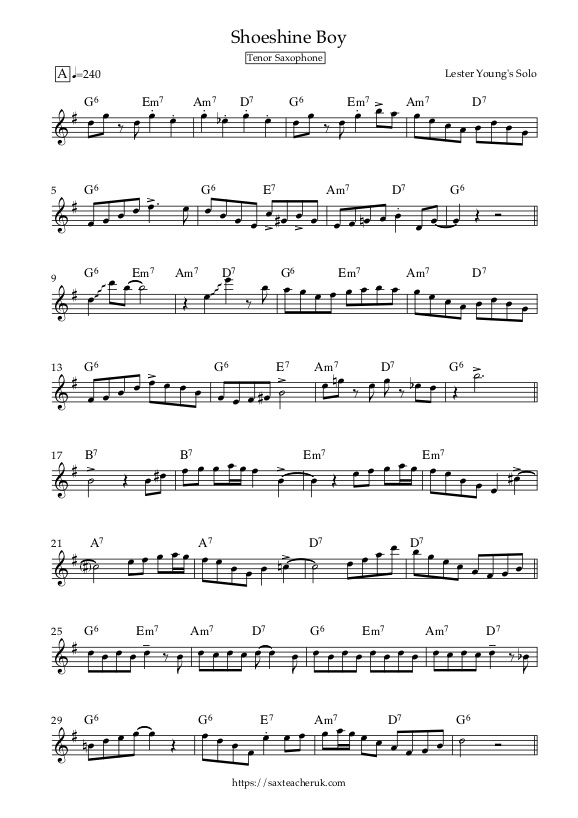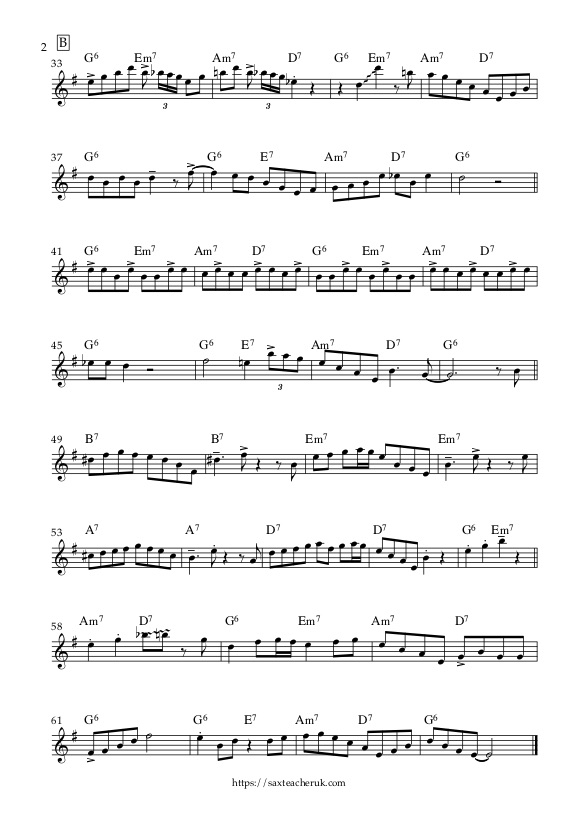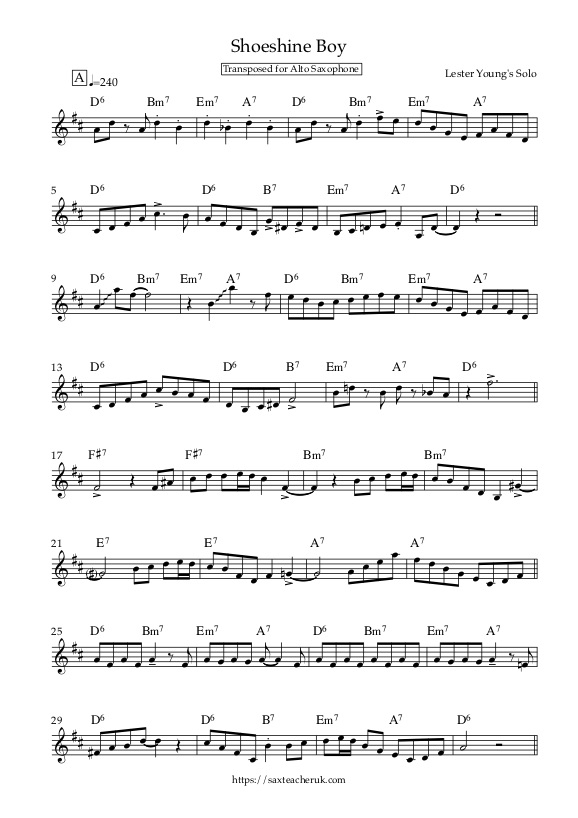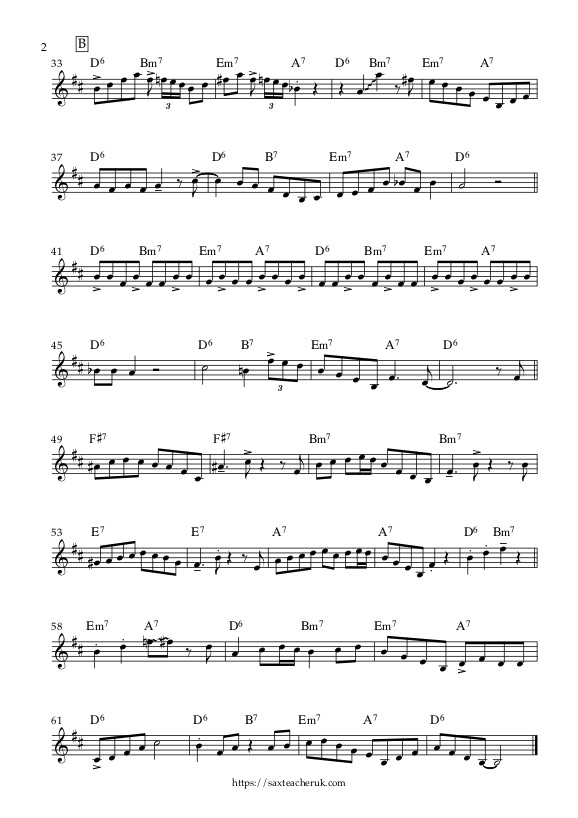Lester Young Transcription - Shoeshine Boy Sheet Music
Transcriptions Home > Transcription

Listen to the recording with the score on Youtube
Download full transcription for Tenor Saxophone
Download full transcription transposed for Alto Saxophone
Shoeshine Boy might be the most studied Lester Young solo on record. This rhythm changes in concert F major is full of amazing rhythmic features. His driving time feel pushes the solo forward generating a constant sense of excitement, and shading the varied and interesting harmonic features throughout the solo.
How to Use the Transcription
Remember that transcribing an improvised solo is primarily an aural activity, not an exercise in reading. Always try to do as much as possible from the recording itself, and only use this transcription if you are really stuck on a phrase.
Time, Rhythms and Articulation
Lester's time in this solo is so driving, providing forward motion and locking in with the rhythm section without ever rushing. He makes use of a very strong Beat 1, to generate momentum, while creating very strong rhythmic hooks for the band to latch onto, eg during the bridge sections. This generates a lot of interaction in the group and serves to increase the impact of Lester's beautiful melodic choices. During the bridge at bars 17-24, Lester makes interesting and exciting use of the 'Big 4' beat, taken from earlier New Orleans music. In the second bridge (bar 49-58) he makes use of another strong rhythmic hook (Charleston rhythm) to foster group interaction and improvisation.
This solo has lots of exciting and punchy accents to generate interest and cross-rhythms. Look at bar 41-45, where lester uses a repeated rhythmic figure to generate tension with the rhythm section, while superimposing rhythms such as the son clave using accents. His use of staccato notes and phrasing also contributes to this effect.
Advice on Deeper Study
Here are some pointers on how to really absorb the content in this amazing solo
- Go for depth not speed. It doesn't matter how fast you learn it
- Practise in shorter phrases, gradually making them longer
- Really listen to and analyse the phrasing and articulation, try to copy it exactly until you sound exactly like the recording
- Don't worry about speed, play it as faithfully as possible with perfect phrasing and articulation at a speed which is comortable and relaxed
- Learn the meaning behind each phrase, what is its history? What does it mean? What is the musical context?
- Try to imagine how Lester was feeling when he was playing this. Practise this feeling as you practise playing the solo
PDF Downloads
Listen to the recording with the score on Youtube
Download full transcription for Tenor Saxophone
Download full transcription transposed for Alto Saxophone


